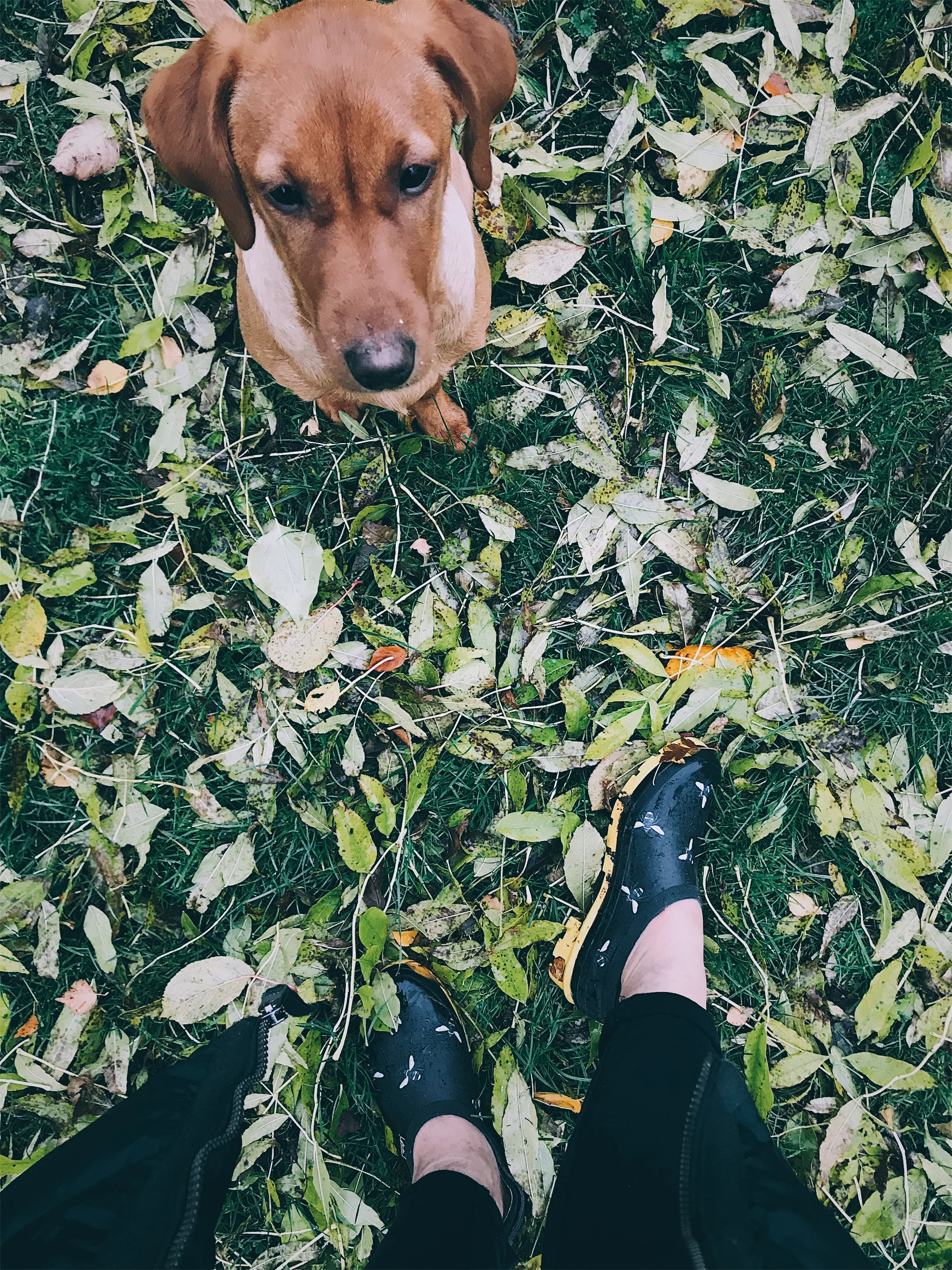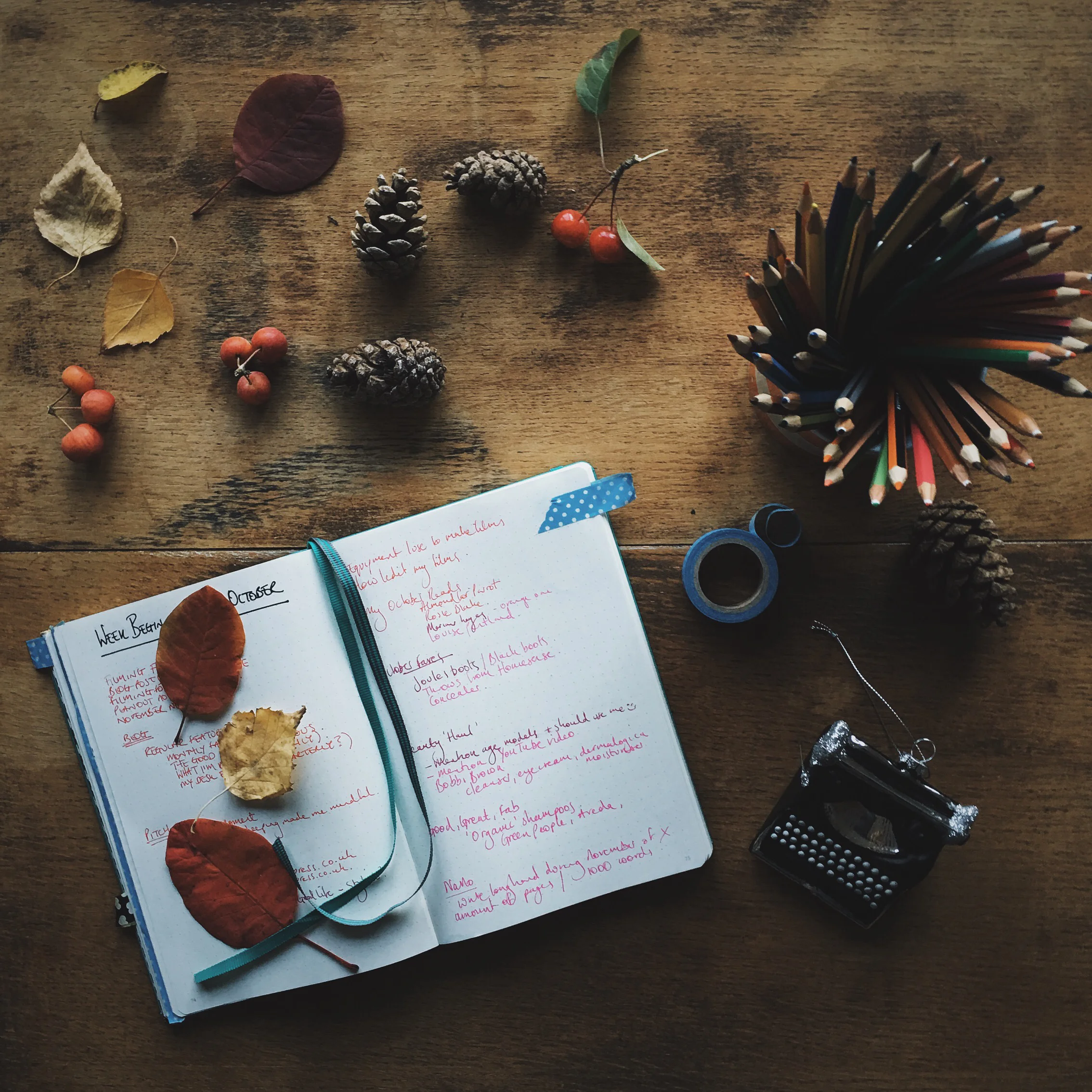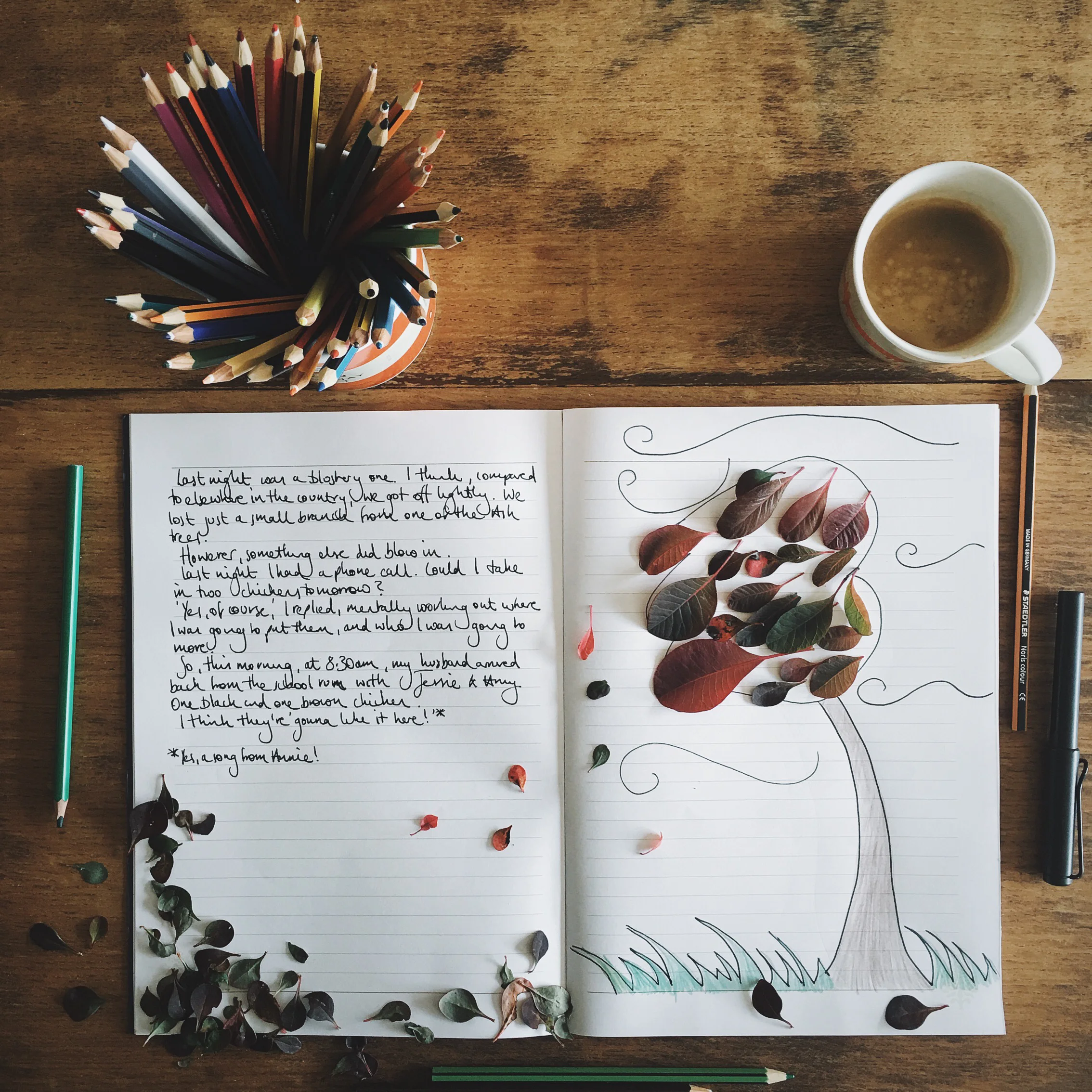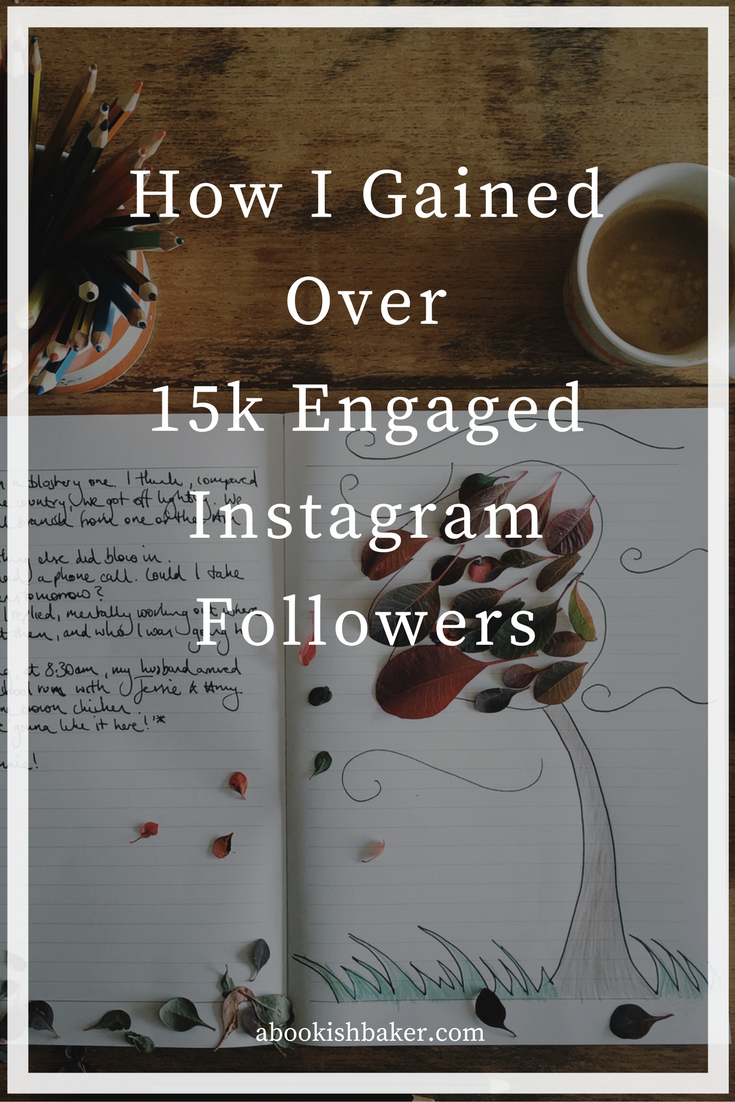How to make a bit of extra income on your blog, Instagram or YouTube video in a non-sleazy way.
Tips for using Pinterest to drive readers to your creative blog
What we, as online creatives, can learn from the Zoella Advent-Calendar-Saga
As I start to write this on the morning of Tuesday 14th November 2017 the fall-out from Zoella's advent calendar is ongoing. In fact, it's pretty much taken on a life of its own.
If you haven't heard about all the drama essentially Zoella's lifestyle range has released a luxury advent calendar, a twelve days of Christmas one - so with 12 doors - and the contents are, well, not very expensive. For example you have some sparkly confetti behind one door, a small candle behind another, seven stickers in one and a small cookie cutter behind another. And for twelve gifts like this you pay £50.
Sharing online stories with heart
It's funny the ideas that can come to you whilst tidying the kitchen.
I was listening to Lucy's podcast, What She said, at the weekend and Lucy mentioned (in this episode) how Pinterest drove traffic to her blog - but only to a small number of her 'helpful' posts. She said, 'there isn't a nice group board for random, oversharing-type posts'.
And I understood exactly what she meant. Pinterest is often the place where you share travel tips, or chicken-keeping tips, or social media marketing tips - posts that people actively search for to answer a question they have.
No More Niching: The Feedback
When I wrote the post: Why I'm No Longer Niching My Blog about why I thought I'd made a mistake in my business because I'd followed all the online advice to 'niche' my blog, I was apprehensive.
Firstly, because I was admitting I'd made a mistake and I was worried how my clients/future clients would feel about this.
And secondly because what I was thinking went against the advice of so many other people online.
But despite my concerns I posted it anyway. As I've been sharing my business (and writing) story, I thought it only fair to say when I'd taken a wrong turn.
How I create my Instagram photos
Instagram is my social media platform of choice. I love it for the creativity, the community and because it enables me to tell a story in a more visual way than just writing.
Have you ever wondered where Instagrammers get their inspiration from? Or, have you wondered how they get overhead shots with both their hands? This is the sort of thing I wonder about.
Why I'm no longer 'niching' my blog
How to Use Instagram to Tell Your Story Online
Five Things I've Learned from Launching a Mentoring Business
It was just over a year ago when I had the idea that I'd like to help other writers market themselves using social media. At the time I had just created this blog, my Instagram presence was less than one thousand followers, I had a love/hate relationship with Twitter and Facebook and had very little experience with other platforms. So what on earth made me think I could do it?
Well, my background is in marketing, so that knowledge I had. And I could see the potential of this online world. I was looking around the internet and there were people, often millennials, leading the way in communicating to different audiences.
There was Zoella with her vlog that captivated thousands and thousands of fans. Or Instagrammers that had tens of thousands of followers, who were now transferring into blogs and video. Some were earning good money from advertising. Others were writing articles in online magazines. Or speaking at conferences. Or getting book deals.
The internet was driving change.
How One-to-One Mentoring Gave Me Confidence to Achieve My Ambitions
I think, without the help of two mentors, I'd probably still be writing blog posts then hiding under the table, hoping no-one would read them. Chatting my ideas and goals with two people helped me enormously. They gave me confidence to acknowledge that yes, I wanted to write about my lifestyle, to try new things and to grow an online business.
Without these mentors I would have kept those unspoken ideas and ambitions in my head; meaning they were susceptible to the 'erosion process'. You know, that internal chat which constantly talks you out of achieving what you want.
You're not good enough, what makes you think you could do that, there are better people than you out there.
Or that internal monologue might shift in shape. It could put the frighteners on me. Scared of failure is one thing. Scared of success is even bigger.
Having a mentor made me answerable to someone else. It forced me to do what I said I was going to do.
Instead of worrying about who would see my work I concentrated on what I was writing about, the quality of my photographs, learning new skills. It distracted the self-doubt and muted it long enough for me to work through various projects.
Two of my long-term goals that I mentioned to my mentor a year ago was to gain a platform of 10,000 followers on instagram and write a mini ebook. In the past month I've achieved both of these ambitions.
My third ambition was to help writers and other creatives achieve a bigger audience through social media. And now this ambition is about to be realised, too.

In a few weeks I'll be opening up a limited number of slots for one-to-one mentoring sessions.
I'll assess your current social media presence, then, in one-hour slots, we can discuss your audience, your own skills and all the background marketing stuff.
Or I can help on a practical level. Setting up a blog, identifying the social media channels to concentrate on, growing your audience on Instagram, taking photographs with your iPhone, developing a theme, creating email lists or using Pinterest.
To book go to my new Bookish Marketing website.
How I Gained over 15,000 Instagram Followers
I feel a bit strange writing that title. How I gained followers. Because, to me, Instagram is a community. It's a place to share photographs, stories and inspiration. And I've never seen the people who follow me as just a number.
It's a fun, creative, inspiring community. Without it, I would never have dared share my writing, gained new skills and confidence, or 'met' so many supportive people. For that I am incredibly grateful.
But I know many of you are intrigued. How did I convince so many people to click on the follow button? It has been a long journey. Just over a year, in fact, to get to this point. Instagram, like blogging, like so many social media engagement platforms, has no get-followers-quick recipe. Unless you buy followers and I really do NOT recommend you do that for so many reasons.
So, how did I do it? This is what worked for me:
1. Take Good quality photographs
This is imperative. You cannot have fuzzy, out-of-focus pictures on your feed. Or pictures taken in bad lighting. Each photograph has to be crisp and clear. And taken in natural light.
It's difficult during the winter months, especially if you work during the day and you desperately want to take a picture of a stunning cake you made in the evening. Believe me, I've been there. But using your kitchen light does not make a good photograph. It makes the photo look yellow and unappealing.
I did this a lot in the beginning. Not just on Instagram but on my early blog posts. I remember taking a picture of a stew (why?!) and some anonymous person commented that it looked a mess. He was right. Rude, but right.
Nowadays if I'm busy during week days I'll take photographs at the weekend to share during the week.
(Incidentally all of my IG pictures are taken with my iPhone 6s+. When I upgraded last year it was a game-changer.)
2. Use filters to create a consistent and cohesive look
On the subject of the quality of the photographs there is no shame in using filters. It's not cheating at all. In the days before digital photographs there would be tinkering in the darkroom by the photographers to get the effect they wanted. Using filters, altering the contrast, exposure, saturation and so on after you've taken the photograph is no different. It is part of the creative process.
I use VSCO on my iPhone to create a cohesive look to my photographs. It's free but some filters are in-app purchases.
3. Look at your grid - how does each individual photo fit in?
You've taken a stunning photograph. It's getting lots of likes and it's all incredibly exciting. Yet these likes aren't converting into followers. The reason? Well, take a look at your grid. Your top three lines of pictures. Is it attractive? Does it look cohesive? Or, does it look like a mish-mash of different subjects? Maybe some pictures are good and some out of focus. Or you have a nice grid with one odd one or two pictures of a lively night out in there with your friends.
The top left picture in my above grid of the lemon cake made it to the explore page and gained well over 2000 likes. That picture alone gained me 400 followers in 24 hours. Because when they clicked on my profile this was the grid that greeted them. (I don't say this to brag, by the way. It's just what worked!)
4. Who is your audience?
You have to think about what you want to use Instagram for. Is it for sharing personal pictures with your friends and family? Or, is it to grow a platform and gain an audience? If it's the former you can post whatever you like. You don't need this article. But if it's the latter then you need to share only your best photographs. A grid of beautiful flowers with a picture of three friends stuck in the middle will look a bit odd. And will possibly stop a person from clicking that follow button.
5. What's your story and theme?
What's your feed about? Mine is about slow living through baking, reading, writing, nature and chicken-keeping. I’m trying to show my creative journey – a journey that has taken lots of twists, turns and false starts. I’m exploring my creativity and I’m very honest and open about my writing and my career path. All my photographs are consistent with this message. People follow me because they know what they're getting.
Because I'm a writer I decided to start sharing my writing. This was in the form of recipes, of my notes and my short non-fiction stories. And that is when my Instagram started to take off.
I started to get creative with it. And my confidence grew. I shared a little chicken doodle with my writing and it captured people's attention. Without getting all woowoo here, I think this was because I wasn't just sharing my writing or a drawing, but I was opening up part of me. My vulnerability. I know lots of people are inspired because I don't just say 'this is the finished product'. But I'm sharing my process and how I'm striving to achieve my ambitions.
If you're a writer or creative then sharing your work-in-progress is so fascinating for others. You still need to curate the picture (messy desks with crumbs and scrunched up paper are probably best for your Instagram Stories) which I do by straightening the notebooks (I like straight lines!). I also add my pot of pencils plus a coffee to many of my notebook shots.
Now, I'm not saying you have to have a theme - this is simply something that worked for me.
My pictures in the past would verge towards the over-saturated. Bright whites with vivid colours. I decided if my story was slow living the look of my pictures also needed to reflect that. So I calmed my photograph colours down, used different filters and gradually, almost on its own accord, a softer colour palette started to emerge.
6. Take time to Experiment
This is very much related to the point above. But get creative. Experiment. Use other instagrammers for inspiration. Pinterest is also another place I find inspiration. (I've a board especially for that.)
7. Use relevant Hashtags
If you want to grow your account then hashtags are very important. They're a way of putting your work in front of an audience who don't yet follow you. But don't use hashtags to describe the object in the photograph. If I had a picture of a cake I wouldn't, for example, use #cake or #delicious. I would use hashtags that evoke the mood. #forahappymoment #embracingaslowerlife are just two of the hashtags I used on one of my cake shots recently.
Hashtags are created by instagrammers. So, for example, Embracing a Slower Life, is one of mine. I wanted to see a gallery of photographs that celebrated the slower things in life that give us joy. That make us slow down and reflect.
Have a look around and find out what hashtags other people are using. If you're a small account don't go for hashtags with over 100,000 pictures on them. Go for smaller ones where you will get seen. Yes, it'll be to a smaller audience, but it'll be your audience.
Oh, and a word of advice. Don't put a hashtag on that is irrelevant to the picture. It spoils the galleries and people really don't like that.
8. think about your Captions
I could write an entire blog post about captions. In fact I probably will at some point in the future. I use captions to practice my creative non-fiction writing. To evoke a mood or place. Not every time but often. I find it a joy to write because I do it quickly without over-thinking it. The potential for captions, especially for the writers reading this, is huge.
9. Take time to Engage
There's very little point in uploading a good quality photograph, putting on the relevant hashtags, writing a thoughtful comment or mini-story then sitting back and waiting for people to like the picture and follow you. You have to engage with other people. Instagram is about a community that benefits from each other. You cannot just go in there and see what you can get out of it. You have to contribute too. Like other people's photos, scroll through hashtags or the explore page and like and follow accounts that attract you. Comment on their pictures. And if someone comments on your picture, reply and go over to their page. You don't have to auto-follow but a like on their latest picture is always nice. (Unless it is a highly inappropriate image!)
Sometimes, however, you may get just a comment like 'this is awesome', a thumb up emoji or similar. This is possibly a bot. A computer bot that likes and comments on photos for instagrammers who have paid for this service in order to grow a following. Don't feel you have to respond to these. Only those who genuinely engage.
10. Show up regularly and consistently
Finally (for now) what worked for me was showing up almost every day. I post in the morning around 7.15am during the week or 9am on a Sunday. That's when my audience is there. That's when they expect to see me. Even with the changes in the algorithm it still pays to turn up at the same time on a regular basis. And what I post is consistent. People know I'm not going to suddenly start posting beach shots, for example. Or pictures of bridges.
Want some specific help with your Instagram? Then take a look at my Instagram Audit service.
Why I've Written an E-Guide about Marketing for Writers
I’ve been blogging for well over ten years in various forms: chatting about my word count, connecting with other writers, hopingsomeone somewhere wouldsomehowdiscover me. It wasn’t until the beginning of 2016 that I decided this was incredibly naive and that I needed to change my strategy (and become my own super hero).
(Yes, I know, what took me so long? But I was also battling imposter syndrome and had no self-belief when it came to my writing.)
It has been fascinating to see the changes, over the last decade, as the internet evolved. There’s been the massive growth in blogs, changing from online diaries to professional brands, the huge rise in the visual and the different apps available to share content with social media. All being done from the comfort of your smart phone.
But what has amazed me more than anything is the the way many, many people are giving up regular, traditional jobs, to become online entrepreneurs.
At the end of 2015 I asked myself: what can I, as a writer, learn from them?
I had an agent. I had a recipe book proposal written and looking good. But, because I had no platform such as a TV programme, publishers were unwilling to take the leap with me.
So, since early spring of 2016, instead of wailing into my (copious cups of) coffee, I decided to go about creating an author platform. Not on TV but by using the apps available to me on the internet. I adopted many of the strategies and tactics that these successful online entrepreneurs were using. I purchased courses and e-books (more on the latter in a future post).
I’ve scratched my head long and hard whilst figuring out what I wanted to say. How I wanted to be seen. I’ve experimented with many forms of social media to grow my audience. Instagram being the main platform where I have a highly engaged audience of nearly 10k. But I’m also on Twitter, Facebook, Pinterest, Steller and YouTube. Then there’s this blog, abookishbaker.co.uk, too.
It has taken me some time but my followers are up. They’re engaged. My blog stats are very healthy. I’ve learned SO MUCH about the practical aspects of online working (creating videos, learning how Pinterest works, how to take and edit photographs with my iPhone, Steller, how to encourage people to follow me on Instagram, how to set up a Facebook page, how to send emails via Mailchimp) as well as marketing in the past year.
A positive side effect of this strategy that I hadn’t anticipated is I’ve shrugged off imposter syndrome (most of the time). I’ve begun putting my writing, my non-fiction stories, online. I’ve incorporated my writing into my Instagram photographs and my YouTube videos.I’m experimenting with my creativity and I’ve found different subjects to write about. It is taking me into exciting new directions.
PLUS - I’m connecting with a fast growing audience.
I would hear from other writers, from those not yet published, to self-published, and the traditionally published, worrying about marketing their books. Thinking they were bothering their followers. Feeling anxious and a bit sick about the idea of selling their book, their product. A book they’d poured everything into but, because they didn’t know how to promote, it may never get read by a large audience.
Because no-one knows about it.
And it occurred to me that the way I was doing it: creating my online platform, adopting the tactics of these online entrepreneurs, adapting them from a writer's perspective - the way I had actively gone out there and sought an audience, could work for other writers, too.
Which is why I have written this ebook. To share my knowledge with others.
For more tips about social media marketing for authors you can:
Like my Facebook page
Follow me on Pinterest
